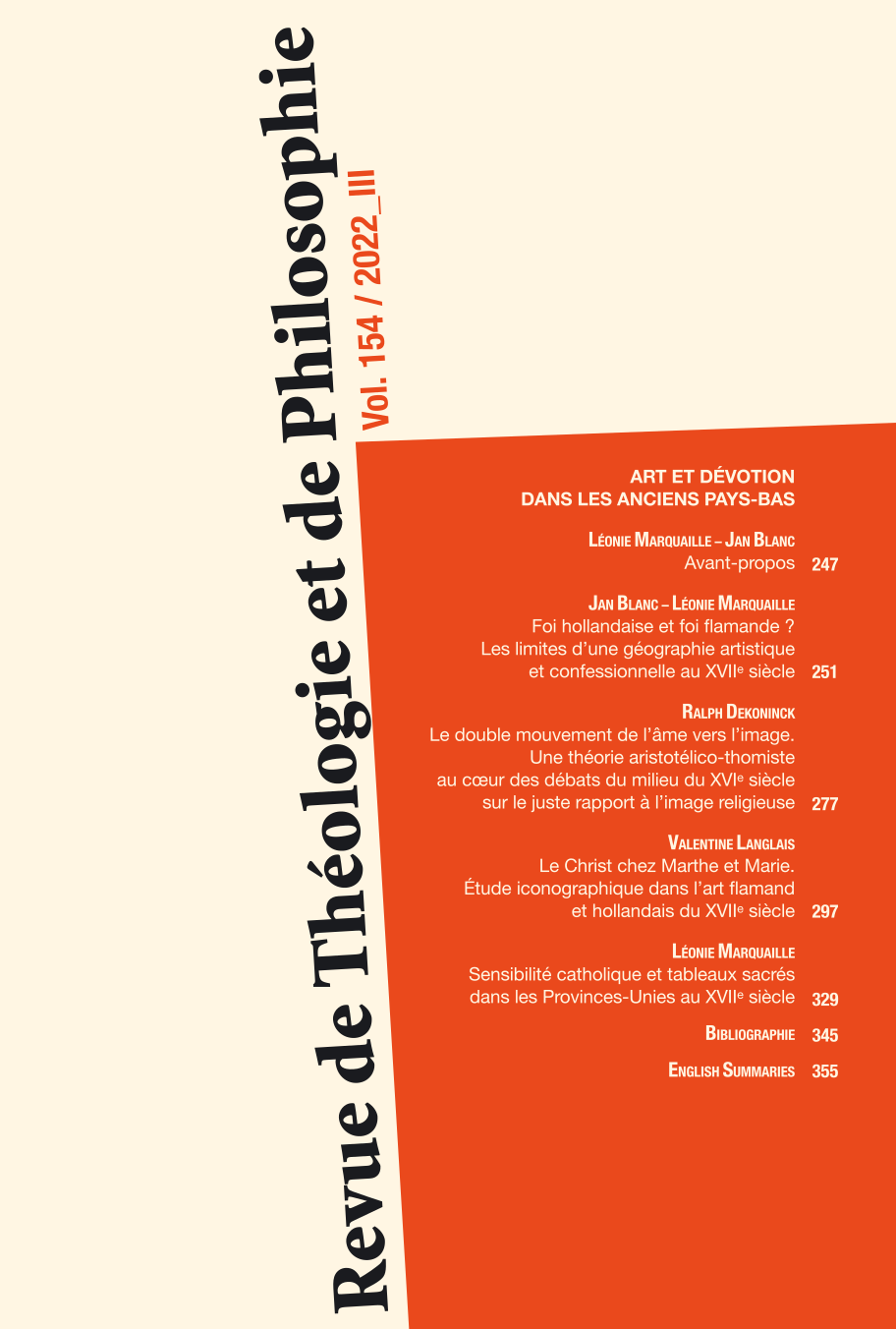Catholic Sensibility and Sacred Paintings in the United Provinces in the 17th c.
Abstract
Although a Calvinist government was established in the United Provinces at the end of the 16th century, Catholics remained numerous in these regions during the 17th c. The iconoclastic crises may have slowed down the commissioning of church pictures, but the huiskerken (house churches) and schuilkerken (hidden churches) were soon decorated with at least one altar picture, in accordance with the legitimate use of images reaffirmed by the Council of Trent. The study of the collections also highlighted the place of religious pictures in Catholic interiors. In this singular confessional context, it is appropriate to question the Catholic sensitivity that could be expressed in the sacred pictures painted in the United Provinces during the 17th century. Beyond their obvious didactic functions, could paintings for Catholic circles also satisfy the sense of sight? To what extent is the Catholic sensibility expressed, not only in the iconographic choices, but also through the plastic qualities of the paintings?
How to Cite
More Citation Formats
Most read articles by the same author(s)
- Léonie Marquaille, Jan Blanc, Avant-propos, Revue de Théologie et de Philosophie: Vol. 154 n° 3 (2022): Art et dévotion dans les anciens Pays-Bas
- Jan Blanc, Léonie Marquaille, Dutch Faith and Flemish Faith?, Revue de Théologie et de Philosophie: Vol. 154 n° 3 (2022): Art et dévotion dans les anciens Pays-Bas
